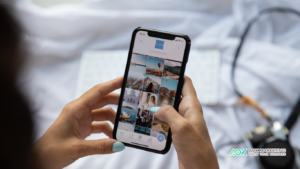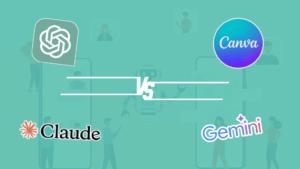Influencer marketing has become a billion dollar industry over the past couple of years. Thanks to social media platforms like Instagram and Tiktok, it has emerged as a powerhouse strategy for brands looking to connect with their target audience authentically. This comprehensive guide explores everything you need to know about influencer marketing, from its definition to its impact on modern business.

Understanding Influencer Marketing
Influencer marketing is a strategic collaboration between brands and individuals who have built a dedicated following in specific niches on social media platforms. These individuals, known as influencers, leverage their credibility and authenticity to promote products or services to their engaged audience. Unlike traditional advertising, influencer marketing taps into established relationships and trust between content creators and their followers.
Key Elements of Influencer Marketing
Authentic Partnerships: Successful influencer marketing relies on genuine connections between brands and influencers who align with their values.
Targeted Reach: Influencers provide access to specific demographic segments, allowing for precise audience targeting.
Trust-Based Promotion: Unlike traditional advertising, influencer marketing capitalizes on the trust influencers have built with their followers.
Content Creation: Influencers create unique, platform-specific content that resonates with their audience while showcasing brand offerings.
Two-Way Communication: Influencers facilitate dialogue between brands and consumers, fostering engagement and community building.
Types of Influencers
Understanding the different categories of influencers is crucial for developing an effective marketing strategy:
Mega-Influencers: Celebrities with 1M+ followers
Pros: Massive reach, high brand awareness
Cons: Lower engagement rates, high cost
Macro-Influencers: 100K-1M followers
Pros: Balance of reach and engagement
Cons: Can be expensive, may work with multiple brands
Micro-Influencers: 10K-100K followers
Pros: High engagement rates, more affordable
Cons: Limited reach, may need multiple partnerships
Nano-Influencers: 1K-10K followers
Pros: Highest engagement rates, very niche audiences
Cons: Very limited reach, time-intensive to manage multiple partnerships
Popular Platforms for Influencer Marketing
Different platforms cater to various content types and audiences:
Ideal for visual content and lifestyle products
Features: Stories, Reels, IGTV, and in-app shopping
TikTok:
Perfect for short-form video content targeting younger audiences
Known for viral trends and high engagement rates
YouTube:
Excellent for detailed product reviews and tutorials
Supports long-form content for in-depth explanations
LinkedIn:
Best for B2B influencer marketing
Focus on professional content and industry expertise
Twitter:
Great for real-time engagement and news-related content
Ideal for quick updates and trending topics
Benefits of Influencer Marketing
1. Enhanced Brand Awareness
Influencer partnerships expose your brand to new, relevant audiences who trust the influencer’s recommendations. A study by Mediakix found that 89% of marketers say ROI from influencer marketing is comparable to or better than other marketing channels.
2. Improved ROI
Studies show that businesses earn $5.78 for every dollar spent on influencer marketing, making it a cost-effective strategy. The industry is expected to grow to $21.1 billion in 2024.
3. Authentic Content Creation
Influencers create unique, engaging content that resonates with their audience while promoting your brand. This user-generated content can be repurposed across various marketing channels.
4. Targeted Reach
Partner with creators whose followers match your target demographic for precise audience targeting. This precision targeting often results in higher conversion rates compared to traditional advertising.
Challenges in Influencer Marketing
While effective, influencer marketing comes with its challenges:
Finding the Right People:
Identifying authentic creators who align with your brand values
Solution: Use influencer marketing platforms and perform thorough vetting
Measuring ROI:
Determining the true impact of campaigns
Solution: Implement tracking links, unique promo codes, and analytics tools
Maintaining Authenticity:
Ensuring promotional content feels genuine and not forced
Solution: Give influencers creative freedom and focus on long-term partnerships
Compliance Issues:
Navigating disclosure requirements and platform-specific guidelines
Solution: Stay informed about FTC guidelines and platform policies
Best Practices for Successful Campaigns
To maximize the effectiveness of your marketing campaigns:
Define Clear Objectives:
Establish specific goals for your influencer partnerships
Examples: brand awareness, sales, lead generation
Research Thoroughly:
Vet potential influencers carefully, examining their engagement rates and audience demographics
Tools: Social Blade, HypeAuditor, Influencer Marketing Hub
Prioritize Authenticity:
Allow influencers creative freedom to maintain their authentic voice
Focus on storytelling rather than direct selling
Track Performance:
Use proper metrics and tools to measure campaign success
Key metrics: engagement rate, reach, conversions, ROI
Build Long-Term Relationships:
Focus on developing ongoing partnerships rather than one-off collaborations
Benefits: increased authenticity, better results, cost efficiency
The Future of Influencer Marketing
As we look ahead, several trends are shaping the future of influencer marketing:
Rise of Micro and Nano-Influencers:
Brands increasingly value smaller, highly engaged audiences
Prediction: 300% increase in micro-influencer collaborations by 2025
Focus on Video Content:
Short-form video content continues to dominate social media
Platforms like TikTok and Instagram Reels lead the way
Performance-Based Partnerships:
More brands opt for results-driven compensation models
Emphasis on measurable outcomes and data-driven decisions
Enhanced Analytics:
Better tools for measuring campaign effectiveness
AI-powered platforms for influencer selection and performance prediction
Regulatory Evolution:
Increased focus on transparency and disclosure requirements
Standardization of influencer marketing practices across platforms
Conclusion
Influencer marketing has revolutionized how brands connect with consumers in the digital age. By understanding its nuances, challenges, and best practices, businesses can leverage this powerful strategy to build authentic connections with their target audience. As social media continues to evolve, influencer marketing remains an essential tool for brands looking to thrive in the modern marketing landscape.
About The Author
Marketing Team
The AOK Marketing Team is a diverse group of amazing individuals driven to help all of our clients succeed. Great people are everywhere, and we believe that people should control their workday, their work environment, and where they live. We have team members in 9 countries: United States, Canada, Egypt, Belgium, Ireland, Australia, India, Pakistan, and Hong Kong.
How can we help you?





